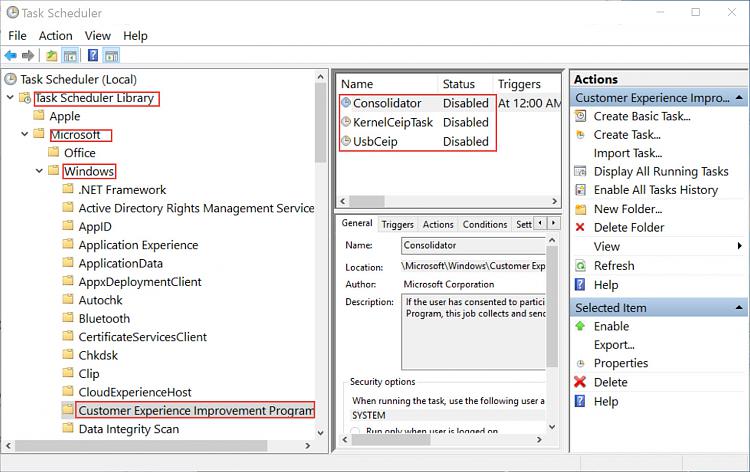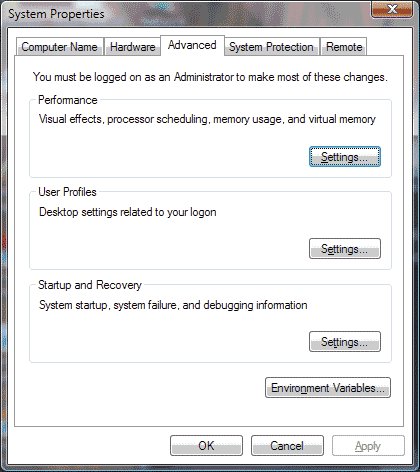Rundll32.exe Windows 8.1
I am running Windows 8.1 Update in a Parallels VM. After about 5 minutes of inactivity, a rundll32.exe process is spawned and consumes a core. MsMpEng.exe activity also increases. (probably due to lots of IO but I can't confirm) If I interact with the VM in any way, the rundll32.exe immediately exits until I let it idle for another 5 minutes.
Task Manager reports that the command line is C:Windowssystem32rundll32.exe invagent.dll,RunUpdate
There is no other unusual behaviour on this Windows install.
Update: Further googling has revealed a scheduled task under Microsoft/Windows/Application Experience called ProgramDataUpdater which seems to be the culprit. It's supposed to take care of cleanup after installing/uninstalling programs. I still haven't tracked down the core reason why it's misbehaving. Disabling it is a possible workaround but not a very good one.
The rundll32.exe process is part of Run a DLL as an App of Microsoft. Here are further details of rundll32.exe, and whether it might be a virus or spyware.
5 Answers
The offending invagent.dll is part of Windows Update KB2976978, which seems to be about gathering app compatability telemetry in preparation for Windows 10 upgrades. Only users who opt into the CEI are offered this update.
By uninstalling the update (and opting out so I'm not re-offered it), invagent.dll was removed from my system and the scheduled task.
To opt out:
- Open Control Panel
- Navigate to Action Center, Change Action Center Settings, Customer Experience Improvement Program Settings
- Select, 'No, I do not want to participate in the program.'
To uninstall the update:
- Open Control Panel
- Navigate to Programs and Features, View Installed Updates
- Locate
Update for Microsoft Windows (KB2976978), right click, and select Delete. - You will be prompted to restart your computer.
Hi I have found this same problem with updating to Win 10 and not a single common answer to this issue worked for me, when my computer would go idle the C:Drive usage would go up to 100% and make any task impossible, leading to manual shutdown by holding the power button. Windows Process explorer would show rundll32.exe and in the properties of this file would be C:Windowssystem32rundll32.exe invagent,RunUpdate -noappraiser (then random numbers and letters).
Yesterday I installed Take ownership of file supplied in the following link:
(http://www.howtogeek.com/howto/windows-vista/add-take-ownership-to-explorer-right-click-menu-in-vista/) Take ownership of file
And then changed invagent.dll found in system32 to invagent.dll.bak (@beatcracker). I left my computer idle for a few hours and the C:drive 100% problem is now gone and I can use my PC normally again. invagent.dll also known as inventory agent. I have researched and can't seem to find a solid answer for what this dll is used for, but so far I have not had any problem disabling it.

This has stopped my computer from freezing, however, rundll32.exe now opens multiple times in process explorer!? with the file>properties command line reading:
C:Windowssystem32rundll32.exe invagent,RunUpdate -noappraiser. Tia portal v13 update 9.
Pianoteq 3 pro full free download. With different random numbers and letters at the end of each command line for every rundll32.exe file!?
So I have fixed 100% C:drive problem by changing invagent.dll to invagent.dll.bak. But potentially opened up a new problem that is currently not causing me any issues. I will edit this answer if I have any further issues over the next week, or discover why multiple versions of rundll32.exe are now running.
Thanks, I hope this helps somebody
Rundll32.exe Error Windows 8.1
EDIT: Wrong answer, it'll just stay here for the history's sake.

Task Manager reports that the command line is C:Windowssystem32rundll32.exe invagent.dll,RunUpdate
This looks like Symantec™ Inventory Solution powered by Altiris™ technology
Is this file is in <Path>Program FilesAltirisInventoryStandalonebin (source)? You could try to renameunregister it and see if it helps. To unregister it run:
then right click & disable items as shown on the picture below:
Another way to solve it is to export the scheduled task to an xml file, change the priority from 4 to 7, and then delete the task and import the xml back to the same place. Most scheduled tasks run at a lower priority of 7. Having a scheduled task that runs at normal i/o and cpu priority is unusual. Here's a link about task scheduler priority: https://bdbits.wordpress.com/2010/04/29/setting-a-scheduled-task-process-priority/
Not the answer you're looking for? Browse other questions tagged windows-8.1rundll32.exe or ask your own question.
You are no doubt reading this article because you’ve looked in task manager and wondered what on earth all those rundll32.exe processes are, and why they are running… So what are they?
RELATED:What Is This Process and Why Is It Running on My PC?
This article is part of our ongoing series explaining various processes found in Task Manager, like svchost.exe, dwm.exe, ctfmon.exe, mDNSResponder.exe, conhost.exe, Adobe_Updater.exe, and many others. Don’t know what those services are? Better start reading!
Explanation
If you’ve been around Windows for any amount of time, you’ve seen the zillions of *.dll (Dynamic Link Library) files in every application folder, which are used to store common pieces of application logic that can be accessed from multiple applications.
Since there’s no way to directly launch a DLL file, the rundll32.exe application is simply used to launch functionality stored in shared .dll files. This executable is a valid part of Windows, and normally shouldn’t be a threat.
Note: the valid process is normally located at WindowsSystem32rundll32.exe, but sometimes spyware uses the same filename and runs from a different directory in order to disguise itself. If you think you have a problem, you should always run a scan to be sure, but we can verify exactly what is going on… so keep reading.
Research Using Process Explorer on Windows 10, 8, 7, Vista, etc
Instead of using Task Manager, we can use the freeware Process Explorer utility from Microsoft to figure out what is going on, which has the benefit of working in every version of Windows and being the best choice for any troubleshooting job.
Simply launch Process Explorer, and you’ll want to choose File Show Details for All Processes to make sure that you’re seeing everything.
Now when you hover over the rundll32.exe in the list, you’ll see a tooltip with the details of what it actually is:
Or you can right-click, choose Properties, and then take a look at the Image tab to see the full pathname that is being launched, and you can even see the Parent process, which in this case is the Windows shell (explorer.exe), indicating that it was likely launched from a shortcut or startup item.
You can browse down and view the details of the file just like we did in the task manager section above. In my instance, it’s a part of the NVIDIA control panel, and so I’m not going to do anything about it.
How to Disable the Rundll32 Process (Windows 7)
Depending on what the process is, you won’t want to necessarily disable it, but if you would like to, you can type msconfig.exe into the start menu search or run box and you should be able to find it by the Command column, which should be the same as the “Command line” field we saw in Process Explorer. Simply uncheck the box to prevent it from starting automatically.
Sometimes the process doesn’t actually have a startup item, in which case you’ll likely have to do some research to figure out where it was started from. For instance, if you open up Display Properties on XP you’ll see another rundll32.exe in the list, because Windows internally uses rundll32 to run that dialog.
Nov 15, 2017 - Half Life 2 Episode 3 Pc Download Torrent > 5c5c846363 NEC SoundStation IP 7000 Quick Start Manual 6 Pages a first. Free download half-life 2 demo. Jan 20, 2018 - At,this,page,of,torrent,you,can,download,the,game,called,Half,Life,2,Episode,One,adapted,for,PC.,Game,was,developed,by,Valve,Games,.
Disabling in Windows 8 or 10
If you’re using Windows 8 or 10, you can use the Startup section of Task Manager to disable it.
Using Windows 7 or Vista Task Manager
One of the great features in Windows 7 or Vista Task Manager is the ability to see the full command line for any running application. For instance, you’ll see that I have two rundll32.exe processes in my list here:
If you go to View Select Columns, you’ll see the option for “Command Line” in the list, which you’ll want to check.
Now you can see the full path for the file in the list, which you’ll notice is the valid path for rundll32.exe in the System32 directory, and the argument is another DLL that is actually what is being run.
If you browse down to locate that file, which in this example is nvmctray.dll, you’ll usually see what it actually is when you hover your mouse over the filename:
Otherwise, you can open up the Properties and take a look at the Details to see the file description, which usually will tell you the purpose for that file.
Once we know what it is, we can figure out if we want to disable it or not, which we’ll cover below. If there isn’t any information at all, you should either Google it, or ask somebody on a helpful forum.
When all else fails, you should post the full command path over on a helpful forum and get advice from somebody else that might know more about it.



